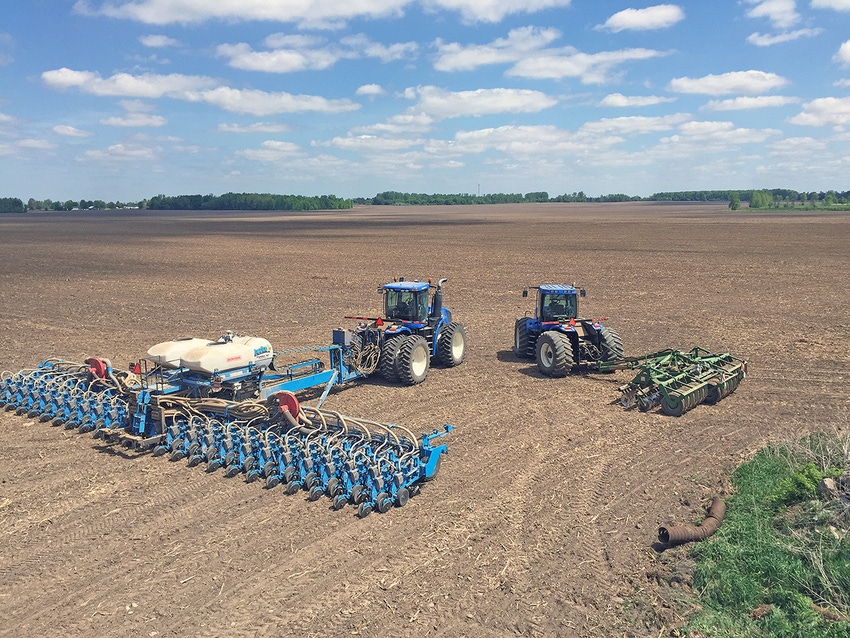December 14, 2015

Marty Derks is on a mission to maximize corn and soybean yields in a harsh climate. That means constantly evaluating new technologies and products on the 2,300 acres he farms with his father Gary about 50 miles south of Ottawa in Ontario, Canada. While the 2015 growing season and yields were impressive, Derks knows he has to push the envelope every season.
"Land is selling for $15,000 per acre in this area," he says. "If I'm going to compete, I have to be adopting new technologies four, five or six years ahead of others."
Twin-row planting combined with precise seed placement are enabling higher planting rates in corn and lower rates in soybeans. Initially Derks experimented with twin-rows using RTK guidance to offset a conventional planter. Satisfied with the results, he modified a conventional planter for twin rows. In 2014, he invested in a customized 60-foot, 24 (twin)-row Monosem vacuum planter for corn and soybeans. It precisely positions seeds in a diamond pattern with twin rows 7 inches apart on 30-inch centers. Precision Planting's WaveVision seed sensors monitor spacing and singulation.
"We are planting 40,000 seeds per acre in corn and around 120,000 seeds per acre in soybeans," says Derks. "I am getting 99% singularity and exceptional emergence. The quick closing canopy in corn reduces weed pressure and produces stalks that stand like trees."
240 bushels in 2015
In 2013, Derks' corn yielded a farm average of 198 with high test weights. In 2014, a late spring and mid-September frost chopped a month from the normal growing season. Yields dropped to an average of 170 bushels per acre, but bounced back to 240 in 2015 with its exceptional weather.
Derks credits his semi-flex ear hybrids with vertical leaves at the top and droopy leaves at the bottom for best performance at high populations, combined with a strong fertility program. He starts with 200 pounds of 19-5-24 with sulfur. At planting, he lays in a 3 by 4-inch band of phosphorus and potash between the rows with seven gallons per acre of 6-24-6 starter over the rows. That is followed by 39 gallons of 28% in split applications at V4 and V7.
"We spend a little more on fertilizer, but you get what you pay for," says Derks, now considering adding subsurface irrigation. "Perhaps sub-surface will be the next success. The goal remains the same: to make the most yield and the most profit."
About the Author(s)
You May Also Like




